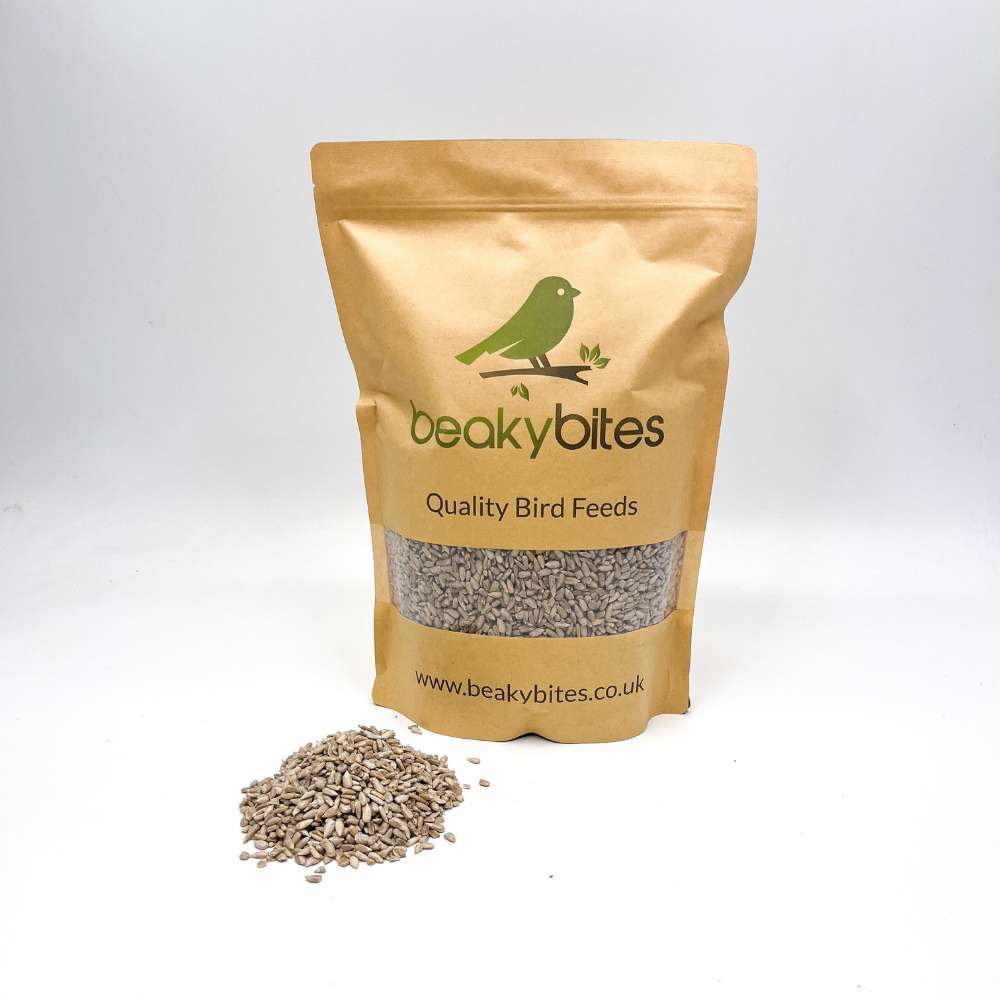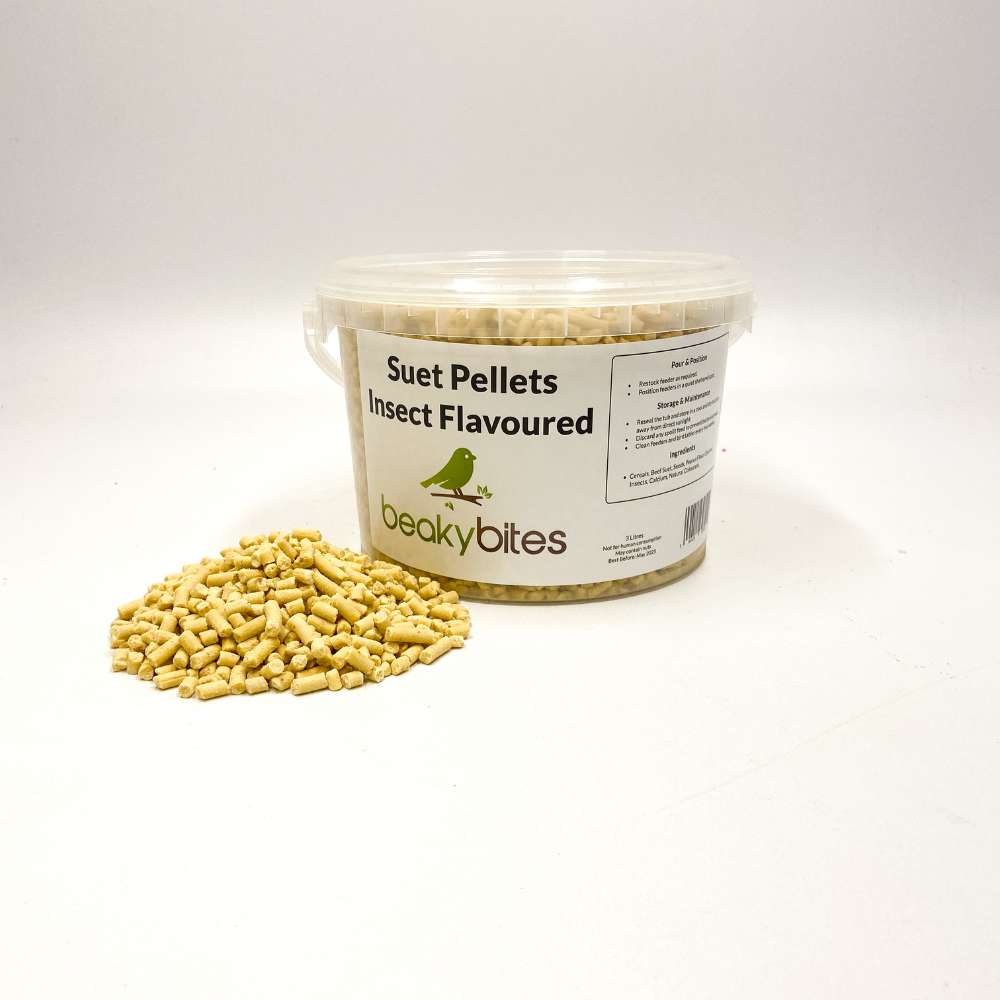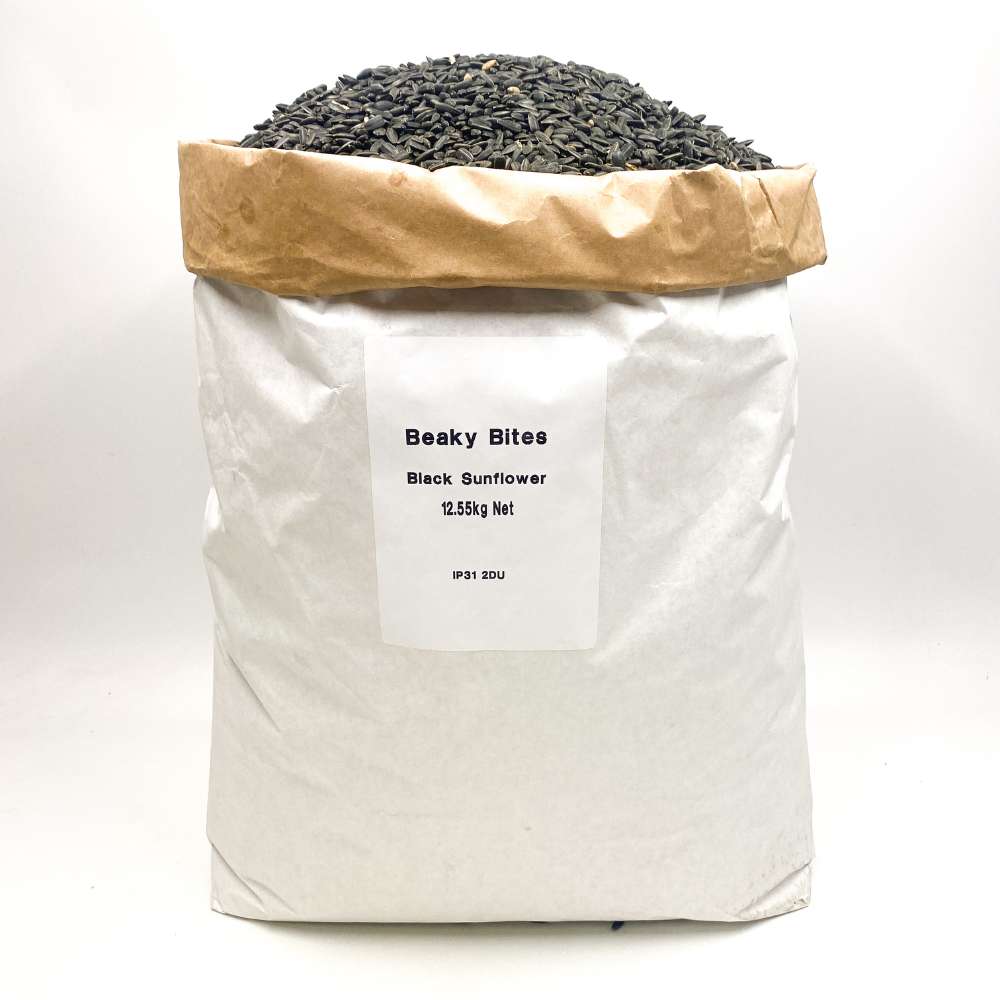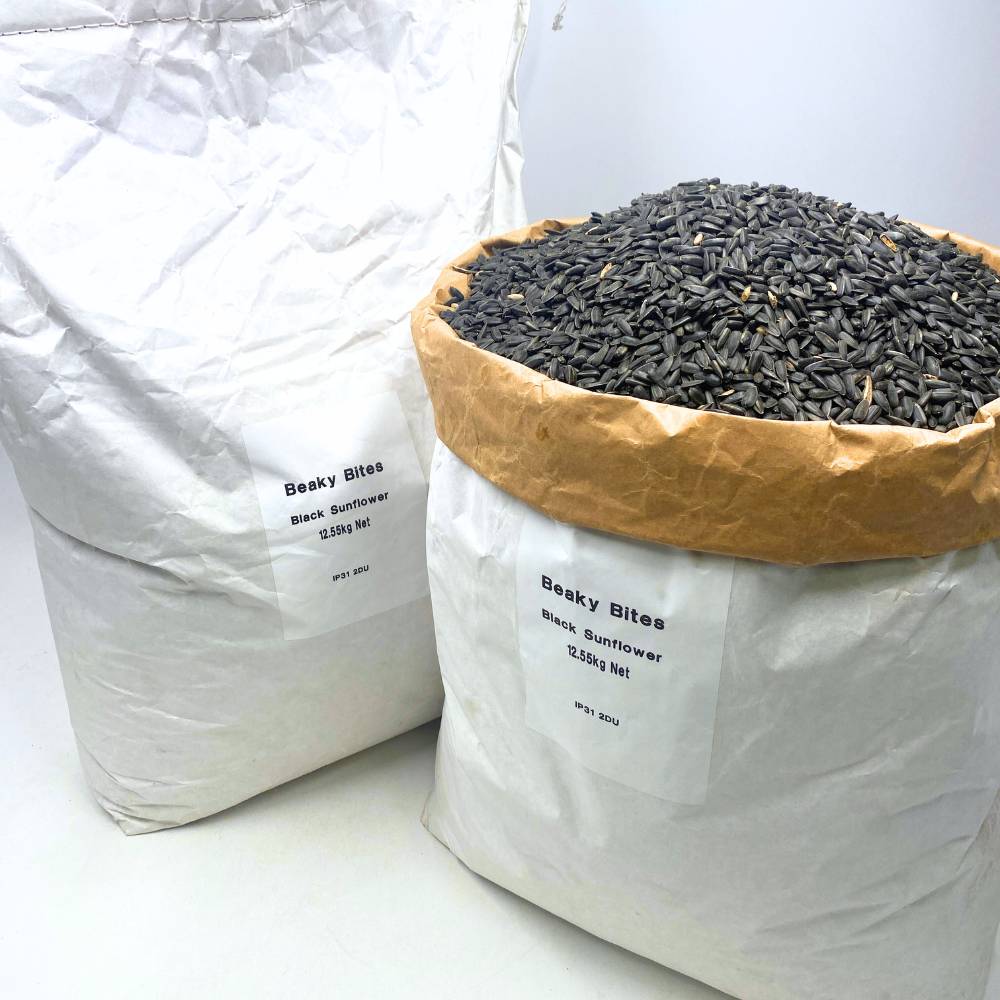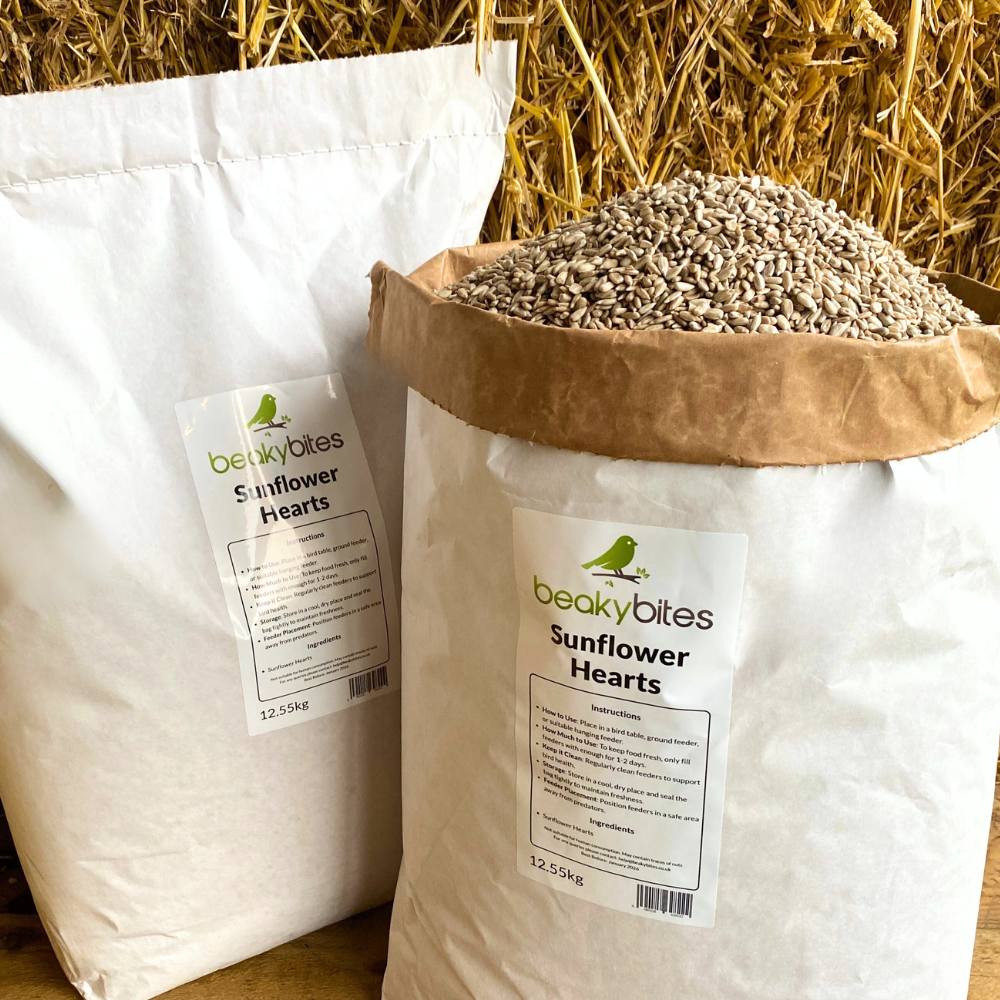Bird Fact File: Magpie

Welcome to our bird guide series brought to you by Beaky Bites! In each post, we'll take a closer look at a beloved UK garden bird to help you better understand and appreciate these amazing birds. From identifying distinct features to discovering their favourite foods and nesting habits, this series aims to provide an overview of our feathered wildlife.
Let's Meet the Magpie
Magpie Fact File | |
|---|---|
| Size: | 44-46cm, head to tail |
| Wingspan: | 50-60cm |
| Weight: | 200-250g |
| Colours: | Black, White, Green, Blue |
| Eggs: | 5-6 eggs per brood, 1 brood a year |
| Nesting: | Top of a tree or hedgerow |
| Population Status: | Stable |
The magpie is a beautiful bird, black and white with green and blue sheen and a long flowing tail. The contrast between the black and white is especially striking when it flies. You’ll see them in gardens, parks, woodlands and farmland, in trees and on the ground. Scientifically known as Pica pica, magpies are part of the Corvidae family. With 1.5 million breeding pairs in the UK they are a common and lovely sight all year round.
.jpg)
Appearance and Behaviour
Magpies are striking birds with black and white plumage, and their iridescent green and blue highlights make them stand out. Both males and females have similar colours, though juveniles start with duller plumage and gradually develop their vibrant adult markings as they mature.
Magpies are opportunistic omnivores, feeding on insects, worms, small mammals, seeds, and berries in the summer, and they will also eat suet, peanuts, and fruit from garden feeders during the winter. Their strong beaks are ideal for picking through food on bird tables or hanging feeders.
Magpies are very social and bold, often seen in pairs or family groups, though they can also form larger flocks in the winter. Their chattering calls and bold personalities add energy to any garden, making them an entertaining and interesting sight all year round.

Where do They Hang Out and Eat?
Magpies are opportunistic eaters and will take advantage of whatever food is available all year round. In spring and summer they eat insects, worms, seeds and berries, often in gardens, fields and hedgerows. You’ll see them scrabbling around on the ground or on plants, making the most of everything they can find.
As autumn and winter approach, magpies will eat nuts, grains and fruit to see them through the colder months. They’ll be seen foraging under bird feeders for dropped seed or enjoying peanuts and suet from garden tables. They’re a regular visitor to gardens and parks because of their varied diet.
Magpies can be found in many habitats, from urban parks and gardens to farmland, woodlands and hedgerows. They need trees or large shrubs for nesting and roosting and open areas for foraging. Adding berry producing shrubs like holly or hawthorn and putting out seeds or suet in feeders will attract magpies.
With their beautiful plumage and cheeky nature, magpies add a dash of colour and charm to any garden. Their bold movements and curious nature make them a joy to watch all year round.

Breeding and Nesting
Magpies start breeding in early spring, usually March and can have up to 3 broods in a season if conditions are good. Each brood has 4-7 eggs which the female incubates for 21-23 days. Both parents take turns feeding the chicks a mixture of regurgitated food to help them grow fast. The young leave the nest after about 30-35 days but may stay nearby, learning from their parents as they get independent.
During breeding season magpies can be territorial and use their calls to communicate and defend their nesting areas. Their chatty and whistly sounds are a familiar sound in gardens and woodlands in spring and summer, adding to the atmosphere.
Magpies build in tall trees, shrubs or on rooftops, building large, sturdy nests out of twigs, leaves and other materials. The nests are strong and sheltered to keep the eggs and chicks safe. They are happy in both rural and urban environments and bring their energy to all sorts of places.
.jpg)
Attracting Them to Your Garden
Magpies are opportunistic feeders, enjoying a diet of insects, seeds, grains, fruits, and even small animals depending on the season. If your garden already has a mix of trees, shrubs, and open spaces for foraging, it's a great start, but adding seeds, nuts, and suet blocks will make it even more appealing. These high-energy foods are particularly important in winter when natural food supplies can be scarce.
Suet is especially attractive to magpies, as it provides the fat they need to maintain their energy levels. Suet pellets, fat balls, or mixed seed suet blocks are ideal choices. Pair these with scattered nuts or sunflower seeds, and you’ll create a feeding area that magpies will visit regularly. They are ground feeders but will also use bird tables or platforms.
Creating a bird-friendly garden with berry-producing shrubs like elderberry, holly, or hawthorn will offer magpies additional natural food sources. Adding feeders that allow easy access to suet and seeds will provide them with extra nourishment during harsher months. While they aren’t particularly picky about feeders, they do prefer spaces where they can perch comfortably or food spread on open surfaces.
By focusing on suet, seeds, and grains, you can attract more magpies to your garden. Their lively behaviour, striking plumage, and playful nature will add a dynamic presence to your outdoor space, especially during the winter months when their visits bring extra colour and life.
.jpg)
Conclusion
Magpies love gardens with lots of different food sources, insects, seeds, grains, berries, nuts and shrubs or trees for nesting and roosting. They like open spaces to forage in, especially near hedgerows or woodlands. They adore suet blocks, mealworms and peanuts which give them the energy for their busy and curious nature.
To attract magpies to your garden scatter food on the ground or use open bird tables as they like to feed in accessible and spacious areas. Plant native shrubs like hawthorn, elderberry or bramble to provide natural food sources and shelter. Magpies are lively and clever visitors, they bring energy and character to any garden with their stunning plumage and playful antics all year round.
Frequently Asked Questions
What do magpies eat in the wild?
- Answer: Magpies eat a varied diet of insects, small mammals, fruits, seeds, and carrion.
Do magpies use bird feeders?
- Answer: Yes, magpies will use bird feeders, especially those offering suet, peanuts, or kitchen scraps.
Are magpies territorial in gardens?
- Answer: Magpies can be territorial, especially during the breeding season when they defend their nesting areas.
Do magpies help control garden pests?
- Answer: Yes, magpies eat insects and small pests, making them helpful for natural pest control in gardens.
Do magpies stay in gardens all year round?
- Answer: Magpies are resident birds and can be seen in gardens throughout the year.


